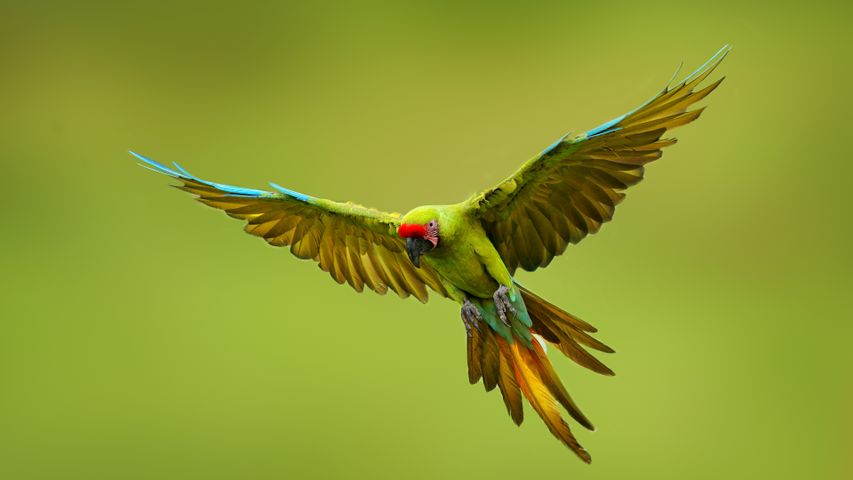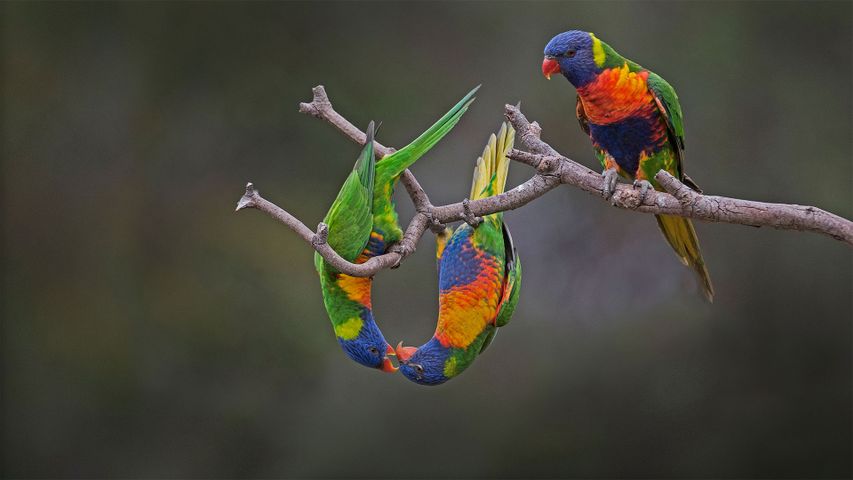Northern carmine and European bee-eaters in Mkomazi National Park, Tanzania
© webguzs/Getty Image
The buzz about bee-eaters
With their striking plumage, tail feathers and long down-curved bills, you can see why bee-eaters are considered among the most beautiful of birds. This group, perching in Mkomazi National Park in Tanzania, is mostly made up of the northern carmine variety, which have blue-green heads and red bodies. A few European bee-eaters have joined them, adding a bit of contrast to the colour scheme.
There are about 25 species of bee-eaters that live throughout tropical and subtropical parts of Europe, Asia, Africa and Australia, with males and females sporting those jewel-toned feathers. These birds live in large colonies, often burrowing into sandy cliffs along a riverbank.
As the name suggests they love to eat bees, as well as other flying insects, which they catch in a mid-air swoop. They bash their prey against a branch to remove venom, if they have a poisonous sting. And these carmines are also known to ride on the backs of large birds and mammals, catching insects that fly up as the creature ambles across the savanna.
Related Images
Bing Today Images



 Great green macaw, Mexico
Great green macaw, Mexico
 Andean cocks-of-the-rock, Ecuador
Andean cocks-of-the-rock, Ecuador
 Plum-headed parakeet at Shimoga, Karnataka, India
Plum-headed parakeet at Shimoga, Karnataka, India
 Blue-throated toucanet, Los Quetzales National Park, Costa Rica
Blue-throated toucanet, Los Quetzales National Park, Costa Rica
 Chestnut-eared aracari in the Pantanal region of Brazil
Chestnut-eared aracari in the Pantanal region of Brazil
 Scarlet macaw in Costa Rica
Scarlet macaw in Costa Rica
 Rainbow lorikeets in Werribee, Australia
Rainbow lorikeets in Werribee, Australia
 Red-lored parrots in Ecuador
Red-lored parrots in Ecuador


